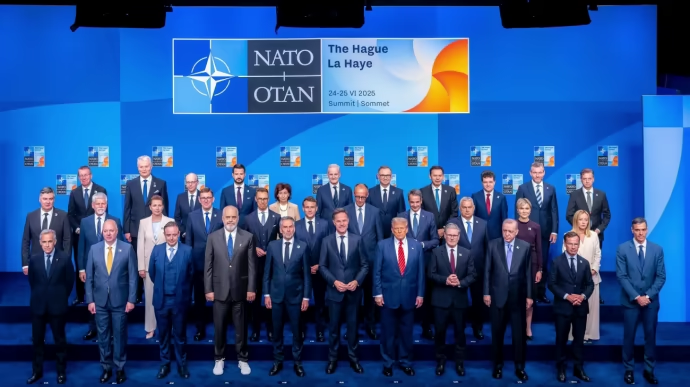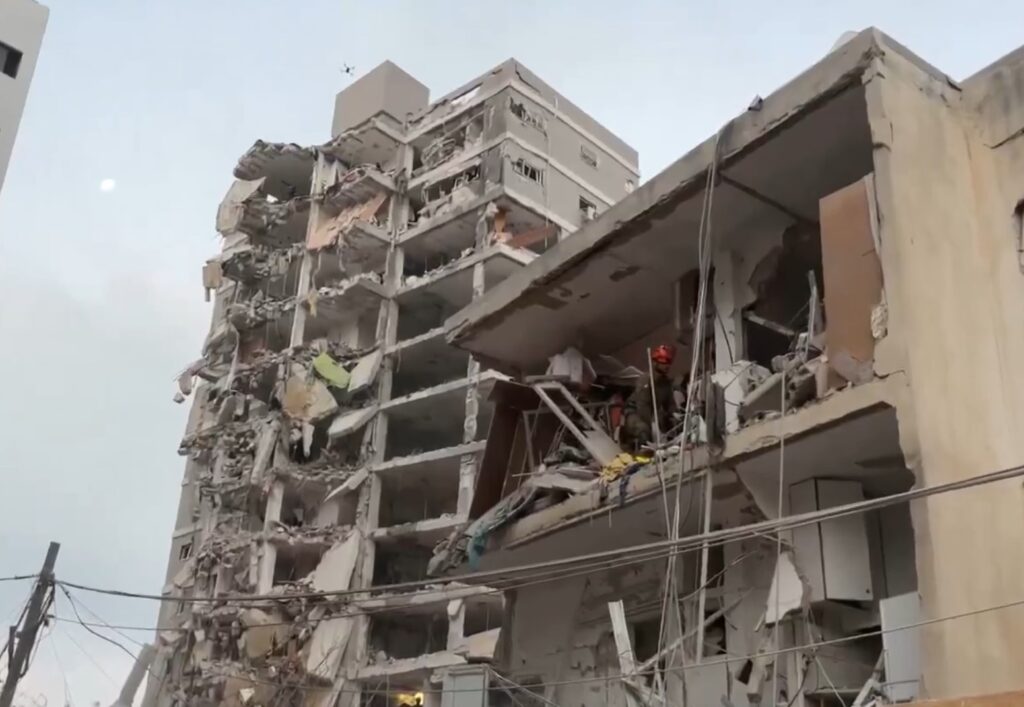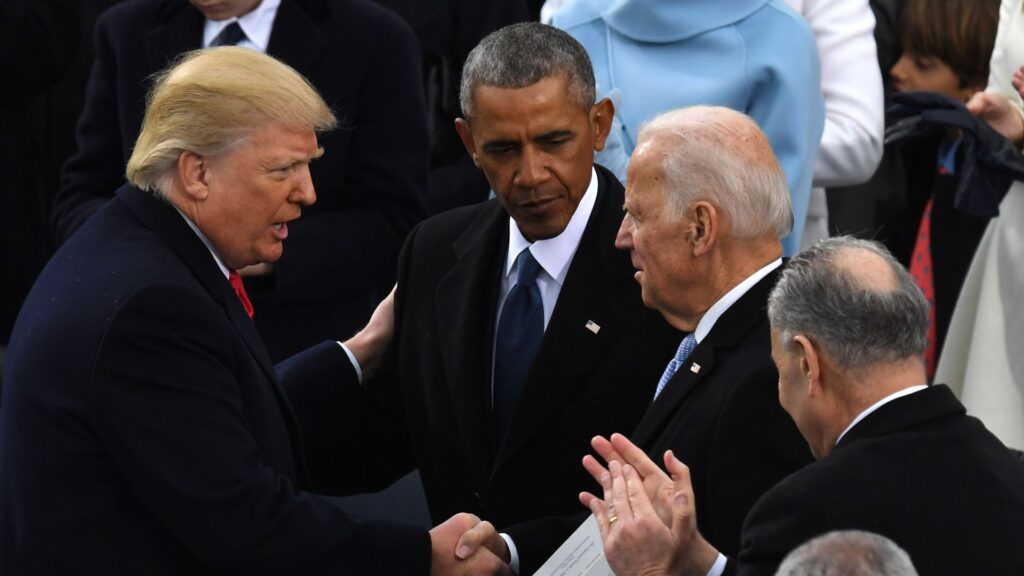RFK Jr. Accuses Gavi, Global Vaccine Agency, of Ignoring Science

© Tierney L. Cross/The New York Times


© Tierney L. Cross/The New York Times


The NATO summit in The Hague concluded with a consensus declaration that designates Russia as a “long-term threat to Euro-Atlantic security,” marking the first major alliance decision under Donald Trump’s presidency, according to Europeiska Pravda, which published the Ukrainian translation of the summit document.
The five-point declaration explicitly identifies Russia as the primary security challenge driving NATO’s commitment to increase defense spending to 5% of GDP by 2035.
“United in the face of deep security threats and challenges, including the long-term threat that Russia poses to Euro-Atlantic security, as well as the ongoing threat of terrorism, allies commit by 2035 to achieve annual investments of 5% of GDP on core defense needs,” according to the document.
Russia emerges as the only non-member state specifically named as a threat in the declaration, while China receives no mention despite Washington’s strategic focus on the Asia-Pacific region. The document was adopted by consensus, indicating unanimous support from all member states including the United States.
The summit took place amid uncertainty about Trump’s position on NATO’s collective defense provisions, with the US president stating en route to The Hague that he would announce his stance on Article 5 only during the summit. The final declaration removes any ambiguity: “We reaffirm our unwavering commitment to collective defense, enshrined in Article 5 of the Washington Treaty – an attack on one of us is an attack on all.”
Ukraine receives prominent mention as the second non-member state referenced in the document. “Allies confirm the permanence of their sovereign commitments to provide support to Ukraine, whose security is a contribution to our security,” according to the declaration.
NATO Secretary General Mark Rutte characterized this provision as part of Ukraine’s “bridge to membership” in the alliance, while confirming that the “irreversibility of Ukraine’s NATO membership” formula established under the Biden administration remains in effect.
The defense spending target breaks down into two components: 3.5% of GDP for core military capabilities and up to 1.5% for security-related infrastructure projects, critical infrastructure protection, and defense industry strengthening. Member states will submit annual plans demonstrating “credible progressive paths” toward meeting these targets.
The declaration includes a provision allowing members to count direct military aid to Ukraine and contributions to its defense industry toward their own defense spending calculations.
Hungary’s position on Ukraine support has been notably contentious. Prime Minister Viktor Orbán did not veto the Ukraine-related provisions, confirming his willingness not to block decisions on Ukraine when they have US administration support, according to the analysis.
The summit also addresses transatlantic defense industrial cooperation, with members committing to “eliminate barriers in defense trade between Alliance members.” However, the provision remains broadly worded without firm obligations, as countries like Türkiye face restrictions on purchasing high-tech American military equipment due to cooperation with the Kremlin.
The declaration concludes by setting the next two summits in Türkiye (2026) and Albania, marking consecutive meetings in Muslim-majority NATO members.
The Hague declaration reinforces themes from last year’s Washington summit, where under Biden’s presidency, the alliance similarly identified Russia and terrorism as direct threats, stating that “Russia remains the most significant and immediate threat to the security of Alliance member states.”
Read also:
You could close this page. Or you could join our community and help us produce more materials like this.
We keep our reporting open and accessible to everyone because we believe in the power of free information. This is why our small, cost-effective team depends on the support of readers like you to bring deliver timely news, quality analysis, and on-the-ground reports about Russia's war against Ukraine and Ukraine's struggle to build a democratic society.
Become a patron or see other ways to support.


Iran has once again launched missile attacks on Israel, striking the city of Beersheba. One of the missiles hit a residential building, killing at least three people, CNN reports.
On 13 June, Israel carried out a large-scale military Rising Lion operation targeting Iran’s nuclear facilities. The operation, years in the making, mirrored Ukraine’s Operation Spiderweb, as both involved coordinated drone swarms launched from hidden bases to cripple enemy infrastructure.
This came just hours after US President Donald Trump stated that Iran and Israel had allegedly agreed to a ceasefire. According to him, the truce was set to begin on the morning of 24 June, with Iran initiating a halt in hostilities, followed by Israel 12 hours later. The ceasefire, however, did not happen.
Iran uses terror against civilians as a weapon of war, a tactic it shares with its ally, Russia.
On the same day, 23 June, Iranian Foreign Minister Abbas Araghchi arrived in Moscow to seek additional support from Russian President Vladimir Putin following recent US strikes on Iran’s nuclear facilities, according to Reuters.
Later, Araghchi claimed that Iran was ready to halt military actions against Israel, while simultaneously blaming Israel for the war.
Meanwhile, in Ukraine, Russia continues its aggression under the guise of peace efforts, launching strikes on homes, hospitals, and schools while claiming to support negotiations. Trump has repeatedly said that Moscow seeks peace, but since the start of such statements, Russia has increased its attacks on different fronts, as well as assaults on civilians.
Previously, US Vice President J.D. Vance declared that following American airstrikes on Iranian nuclear facilities, Tehran is no longer capable of building a nuclear weapon, per The Guardian. However, he declined to comment on the status or location of Iran’s highly enriched uranium, saying only that he believes it was buried.
On 23 June, after a Russian strike on Kyiv, which killed nine civilians, including an 11-year-old girl, Ukrainian President Volodymyr Zelenskyy said that Russian assaults have become possible due to “a coalition of killers”, meaning Russia, Iran, and North Korea.
Putin mourned Nazi victims—then ordered missile strike on Kyiv, which kill 11-year-old girl and her mother
“Everyone in countries bordering Russia, Iran, and North Korea should ask themselves whether they could protect lives if this coalition of killers survives and continues spreading terror,” he emphasized.


A dramatic UN vote back on 24 February exposed a widening rift between the United States and Europe over Russia’s war in Ukraine, with US President Donald Trump aligning with Moscow and leaving key allies blindsided, according to Le Monde columnist Sylvie Kauffmann.
According to the Le Monde article, the fracture did not begin with Trump. In 2014, during Russia’s seizure of Crimea, then-President Barack Obama reportedly sent a message to Kyiv discouraging resistance, offering no military support. Ukrainian soldiers surrendered without a fight. In 2023, Obama defended his actions, arguing that Crimea’s Russian-speaking majority made a different response impractical.
In 2022, President Joe Biden attempted to prevent a full-scale invasion, sending warnings to both European allies and Ukraine. Vice President Kamala Harris privately warned Zelenskyy at the Munich Security Conference on 19 February. According to Bob Woodward’s 2024 book War, Zelenskyy responded with frustration: “If I acknowledge it… will you impose sanctions?” Harris said punishment would come only after the crime.
With Trump back in office in January 2025, the United States took a starkly different stance. On 21 February, US chargé d’affaires Dorothy Shea informed French and British ambassadors that the US was asking Ukraine to withdraw its draft UN resolution condemning Russian aggression. Instead, the US proposed its own resolution focused on “peace rather than war.” Shea confirmed that this had been discussed with Russia in advance.
Biden, Obama, Trump: Different presidents, same Russian reset trap
The reaction from European diplomats was one of betrayal. In crisis talks, they rallied to defend Ukraine’s draft and split responsibilities: Britain would lead at the Security Council, France at the General Assembly. The French introduced amendments emphasizing territorial integrity—rejected by the US—but Ukraine’s version passed, while the US abstained on its own resolution.
At the Security Council, the US voted alongside Russia and China. The five European members abstained.
On 28 February, Ukrainian President Volodymyr Zelenskyy faced a confrontational meeting with Trump and Vice President JD Vance. According to European sources cited by Le Monde, the exchange was heated, with Trump accusing Ukraine of starting the war and calling Zelenskyy a dictator. Days earlier, Macron and Starmer had met Trump with the aim of calming tensions.
Despite his support for military aid to Ukraine post-2022, Biden was reportedly frustrated with the Obama administration’s failures. “They f**cked up in 2014,” he told a friend, as cited in Woodward’s book. Yet even Biden was constrained.
According to an official cited by Le Monde, Biden’s fear of nuclear escalation led advisors to avoid presenting options that might provoke Russia. This hesitation disheartened Ukrainian officials and alienated committed Europeans.
Biden calls Trump’s Ukraine policy modern-day appeasement of Russia
Le Monde says that the 24 February 2025 UN vote “sealed the divorce” of the US and Europe. From Obama’s caution, to Biden’s hesitations, to Trump’s overt realignment with Russia, Ukraine has been left to Europe. The US no longer sees Ukraine as vital, while Europe faces an existential threat. A new era in Western diplomacy has begun—and it may be one without America.